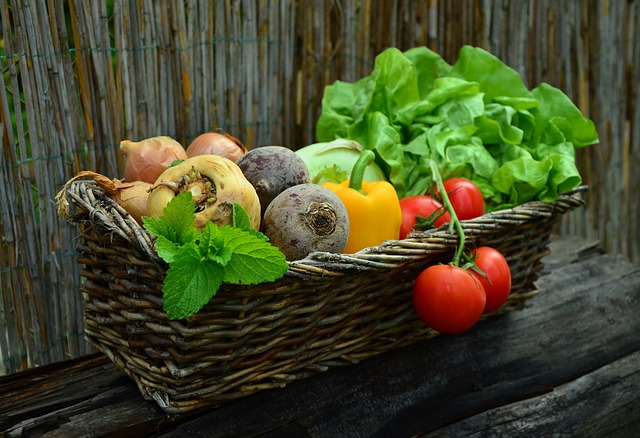A Guide to good Digestion Part 3: The Liver, Gallbladder and Pancreas
By Lydia Irving
How exciting to make it this far down the digestive tract! We are almost halfway. By the completion of these articles I hope you feel much more connected and appreciative of the journey your food goes on after it disappears down your gob, and thankful to your guts for all the hard work they put it completely unbeknown to you. They only harass you when treated without thought and care. Love Your Guts!
So, let’s get into it: The Liver, Gallbladder and Pancreas. These three organs I am grouping, because they all work together to assist in the breaking down of macronutrients and the activating of micronutrients. This article will focus on Macronutrients. These are Lipids (fats), Carbohydrates (sugars) and Protein, and the trio of pancreas, gallbladder and liver plays in processing them into small, absorbable nutrients. These three “accessory organs” collaborate at the top of the small intestine, just after the stomach. This is called the duodenum and the jejunum section of the small intestine and this is where most of the absorption occurs in the small intestine.
Now let’s zoom our focus onto chemical digestion. The liver, gallbladder and pancreas all release digestive enzymes and acids and to break down these large molecules chemically (rather than mechanical methods as previously mentioned in Part 2: The Stomach). I will present the different way each organ breaks down fat, sugar and protein.
Liver & Gallbladder
The Liver is a huge organ (1.5 kg in weight) which takes up most of the upper abdominal space. Triangular in shape, the liver is so multifactorial and essential to our existence it is a part of its own body system – The Hepatobiliary System- which also encompasses the gallbladder. Without being too biased, I want to spend a bit of time on the liver as I feel it does not get enough street credit. Most people I talk to solely think of drug and alcohol consumption and the role the liver plays in detoxing these from the body. However, the liver does so much more! In particular the liver’s role in digesting and absorbing nutrients into the bloodstream is hugely important. Now, I can’t talk about this without including the gallbladder. The gallbladder is tucked up and nestles into the bottom of the liver (CUTE!) and is infamous mostly for housing painful gallstones. But the gallbladder should be more famous for storing and releasing bile salt to break down fats.
The liver interacts with macronutrients in many different ways. Firstly: by chemically breaking down and digesting macronutrients into micronutrients (using enzymes) that can be absorbed in the small intestine. Secondly: the newly micronutrient rich food that enters the bloodstream from the digestive tract then all has to go to the liver to be sorted. The liver decides if the molecule needs to be converted into a form that will allow it to be absorbed or detoxified (and leave the body because it is toxic).
Fats
A diet high in good fat food is highly recommended these days for many reasons, namely brain health and balancing blood sugar levels. However, when increasing fats in the diet it is the liver and gallbladder that cop the extra workload. This means you must ensure both organs are being supported nutritionally to do their job. The gallbladder’s job is to release stored bile, that is made in the liver, to prepare fats to be transported in the blood. To put simply, bile does not digest fats but rather emulsifies fats so they then can be digested by enzymes in the small intestine. The liver allows the body to absorb fat soluble vitamins such as Vitamin A, D and E through an activation process. These are vitamins that are needed for healthy skin and hormone production and if deficient in the body may cause depression.
Sugars (carbohydrates)
The main aim of the game here is to turn sugar molecules into glucose and then to convert glucose into glycogen which can be used for… ENERGY! The liver metabolizes carbohydrates through a process called gluconeogenesis. This entails long/complex sugars such as fructose and galactose being broken down to be a small and simple sugar called glucose. The liver then does the fancy conversion of glucose into glycogen (hopefully) which is stored in the liver, this is called glycogenolysis. I say hopefully because in many cases when we eat too much sugar (or have hormonal imbalances) instead of converting into glycogen, glucose is turned into triglycerides and stored as body fat as a protective mechanism. This is a reason why when trying to achieve a lower body fat percentage it is important to make sure your liver is functioning optimally.
Proteins
Proteins need to be broken down into amino acid for the body to be able to use them. Amino acids are essentially building blocks of the body everything from nervous system support (to make us happy) to making big strong muscles. The liver assists in making amino acids out of proteins but when this happens toxic by-products are made, such as ammonia. To put simply, the liver makes protein less toxic for the body. The gallbladder and liver also denature proteins to then pass onto the pancreas to finish the job.
The Pancreas
The pancreas contains a liquid or “pancreatic juice” made up of digestive enzymes these include pancreatic amylase, maltase, trypsin, elastase, dipeptidases and so on. The Pancreas is located just across the road (small intestine) from the liver and beneath the stomach. It is bumpy and elongated in shape, in text books it’s often green in color, in real life… not so much. The pancreas usually gets a lot of attention in the media for the role it plays in diabetes because it releases insulin which is necessary for glucose to get into cells. However, 90% of its job is making pancreatic juice to digest fats and proteins (don’t forget, most of the carbohydrates are digested and absorbed before even making it to the small intestine)! The pancreas needs the bile from the gallbladder to be effective at snipping up nutrient chains. Teamwork!
I hope you have made your way safely down past your “accessory organs” and are all warmed up and excited for your small intestine.
Here is another article on the gallbladder https://spectrumchiropractic.com.au/love-your-gallbladder/

